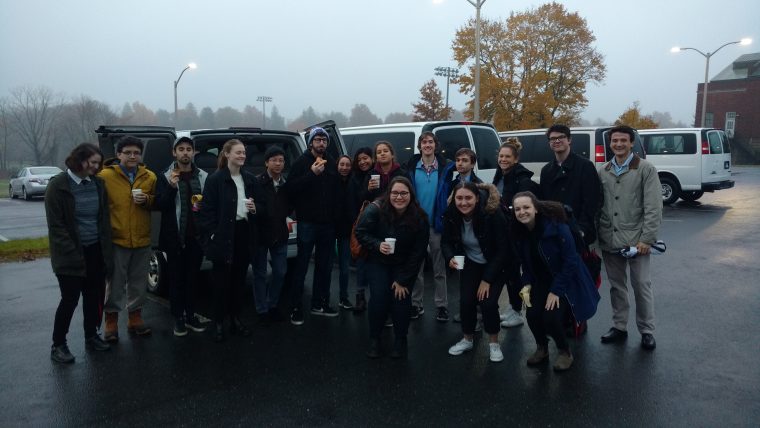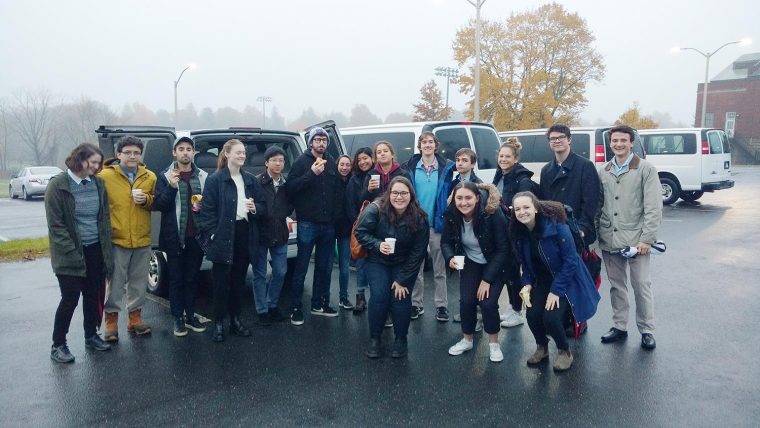Campaigns and Elections Class Conducts Real-World Exit Poll Research


Students in Assistant Professor of Government Logan Dancey’s GOVT 232 Campaigns and Elections course got a real-world lesson in the subject matter this Election Day.
On Nov. 6, the students stood out in the rain to field an exit poll—a survey of voters as they’re leaving their polling locations—in Connecticut’s Fifth Congressional District. The students conducted the surveys at nine different polling places spread out across six different towns in the district.
In order to generate a diverse sample that reflected the demographics of the congressional district, the precincts were intentionally selected to provide a balance of more Republican-leaning, Democratic-leaning, and balanced precincts. The survey included a mix of demographic and political questions, such as respondents’ race; sex; age; party identification; approval of Trump and Governor Dannel Malloy; vote choice for House, Senate, and governor; and positions on issues such as the Affordable Care Act, border wall, and abortion.
Dancey and his class teamed up with classes at other colleges and universities—including St. Olaf College in Minnesota, North Dakota State University, Beloit College in Wisconsin, and Colgate University in New York—which fielded similar surveys in multiple districts. The students then shared the data to analyze. Dancey’s students communicated by video conference with students in North Dakota and Minnesota to discuss the races in their states and their experiences conducting the exit polls.
The students then divided into small teams to analyze different aspects of the data, such as the relationship between approval of President Trump and voting across House, Senate, and governor’s races; the predictors of split-ticket voting (for example, voting for one party for House and another party for governor); and differences in political attitudes and vote choice across different demographic groups. The students will present their research and write papers on their findings in December.
Joshua Cardenas ’19, one of the students in the class, said, “Throughout the entire semester, we analyzed campaigns and elections from an academic perspective; now with this exit poll data, it will be exciting to apply what we learned about campaigns and elections to explain why voters held certain political attitudes and vote choices in the midterm elections. I look forward to seeing how well the hypotheses of my class held up once we analyze the data.”
“The project allows students to be producers and not just consumers of research into the 2018 election,” said Dancey. “Working individually and collaboratively, students are learning the academic literature on elections, developing their own expectations about voter attitudes and behavior in 2018, and collecting and analyzing data to test those expectations. The class helps students build their research and data analysis skills while also improving their understanding of what is happening in politics right now.”
Funding for the project was provided by an Andersen/Rosenbaum Teaching and Pedagogy Grant, which covered a trip out to Minnesota to plan the course design with professors at St. Olaf and North Dakota State, as well as transportation and other materials for the exit poll.

